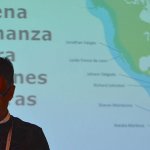As shorebirds face a myriad of threats throughout their annual cycle, a myriad of solutions will be needed to protect them. At the Western Hemisphere Shorebird Group Meeting on November 10 – 14, 2017 in Paracas, Peru, the WHSRN Executive Office and Manomet’s Habitat Management Division hosted two symposia where partners and colleagues were able to showcase their conservation efforts in three key areas for addressing threats to shorebirds: community engagement, habitat management, and good governance.
The symposia included robust discussions that highlighted a variety of needs for conservation to be successful. Both emphasized the importance of collaboration with many partners and stakeholders, a multi-faceted approach that includes multiple strategies and activities, and the patience to maintain programs over long periods of time in order to achieve success.
Community Engagement for Shorebirds Conservation
Laura Chamberlin and Diego Luna Quevedo of the WHSRN Executive Office led the Community Engagement for Shorebirds Conservation symposium to discuss best practices for community engagement including program design, social research, sample tools, and evaluation. Partner case studies and symposium discussion contributed to the development of a WHSRN community engagement toolkit to assist sites in developing effective programs.
Case Studies Included:
-
Ana Agreda De La Paz, Birdlife from Ecuasal Salt Lakes, Ecuador.
-
David Bradley, Bird Studies Canada from Fraser Estuary, British Columbia, Canada.
-
Mirta Noemí Carbajal, Fundacion Inalafquen from Bahia de San Antonio, Argentina.
-
Jessica Suárez Valbuena, Asociación Calidris from Bocana de Iscuandé, Colombia.
-
Silvia Ferrari, Gallegos Estuary, Patagonia, Argentina.
-
German Montero, Asociación Ambiente Sur, Argentina.
-
Jessica Paredes, Centro Bahia Lomas in Chile.
-
Isabel Justiniano, Environment for Americas.
Pulling inspiration from the case studies and their own experiences, participants discussed the challenges of community engagement and what is needed to be successful. The most critical challenge, of many, is how to demonstrate the community benefits of shorebird conservation. Benefits include economic opportunities, improved quality of life, better living conditions, connection to necessary natural resources, improved health, and protection of cultural heritage.
Participants were even more enthusiastic about the prospects for successful community engagement. Successful community engagement will require creativity, multiple different activities, collaboration, and assessment of all community resources. In collaboration, it is especially important to consider working with different sectors, such as stakeholders working on social issues, artists, sport groups, and healthy community initiatives. Most importantly, community engagement requires patience and time. Most projects require at least 4-5 years, but many take even longer.
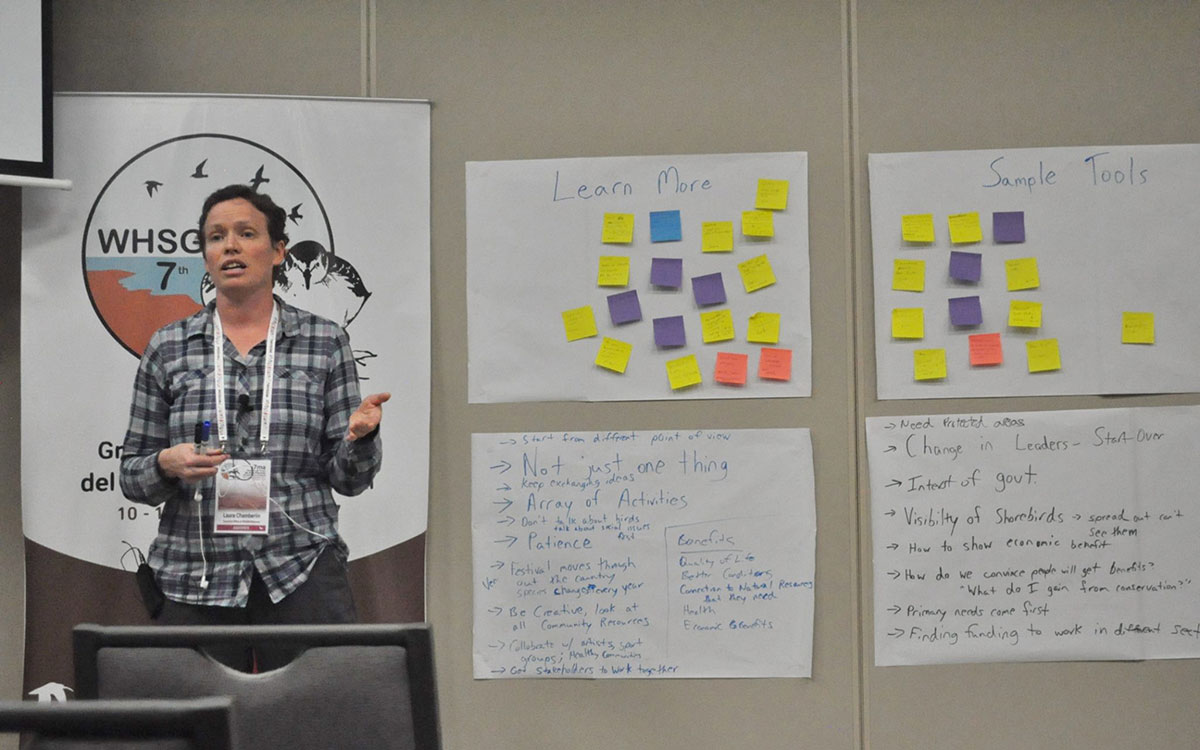
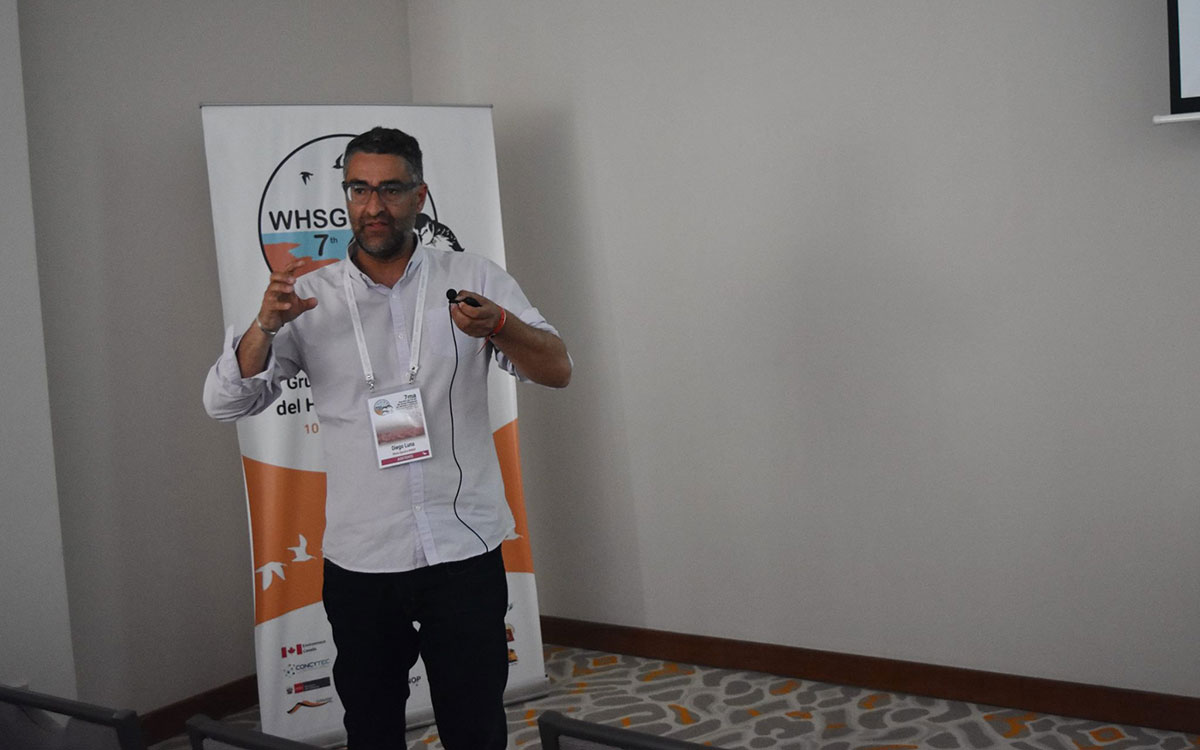
Left: Laura Chamberlin, WHSRN’s Community Engagement Specialist, leads a session about community engagement for shorebird conservation. Right: Diego Luna Quevedo, Conservation Specialist with the WHSRN Executive Office, leads a discussion about good governance. Photos: Diego Luna Quevedo.
Improving Habitat through Management and Good Governance
Brad Winn and Monica Iglecia of Manomet’s Habitat Management Division and Diego Luna Quevedo of the WHSRN Executive Office led Improving Habitat through Management and Good Governance, sharing lessons about how habitat management and governance need to work in tandem for successful shorebird conservation initiatives. The symposium also discussed challenges and opportunities that lie ahead.
Case Studies Included:
-
Ana Agreda De La Paz of BirdLife, Ecuador
-
Juliana Bosi de Almeida of SAVE Brasil, Brazil
-
Mirta Noemí Carbajal of Fundacion Inalafquen, Argentina
-
Carmen Espoz of Centro Bahia Lomas, Universidad Santo Tomás, Chile.
-
Shiloh Schulte of Manomet, United States
-
Jessica Suárez Varbuena of Asociación Calidris, Colombia
-
Elier Tabilo Valdivieso of Centro Neotropical de Entrenamiento en Humedales, Chile and Peru
Presentations were followed by an open discussion about the role and use of management and good governance to facilitate conservation at important shorebird sites. Both presenters and participants emphasized the importance of building a shared vision and developing guidelines and tools that provide a framework for action on governance and habitat management actions. The discussion highlighted the need for long term investments in site-specific conservation, participation of government at all stages of the process, and an understanding of local biological resources. It also underscored the idea that while certain threats to shorebirds, like disturbance, are widespread, the solutions to reduce those threats will require collaboration among partners and a unique local application of the tools available.
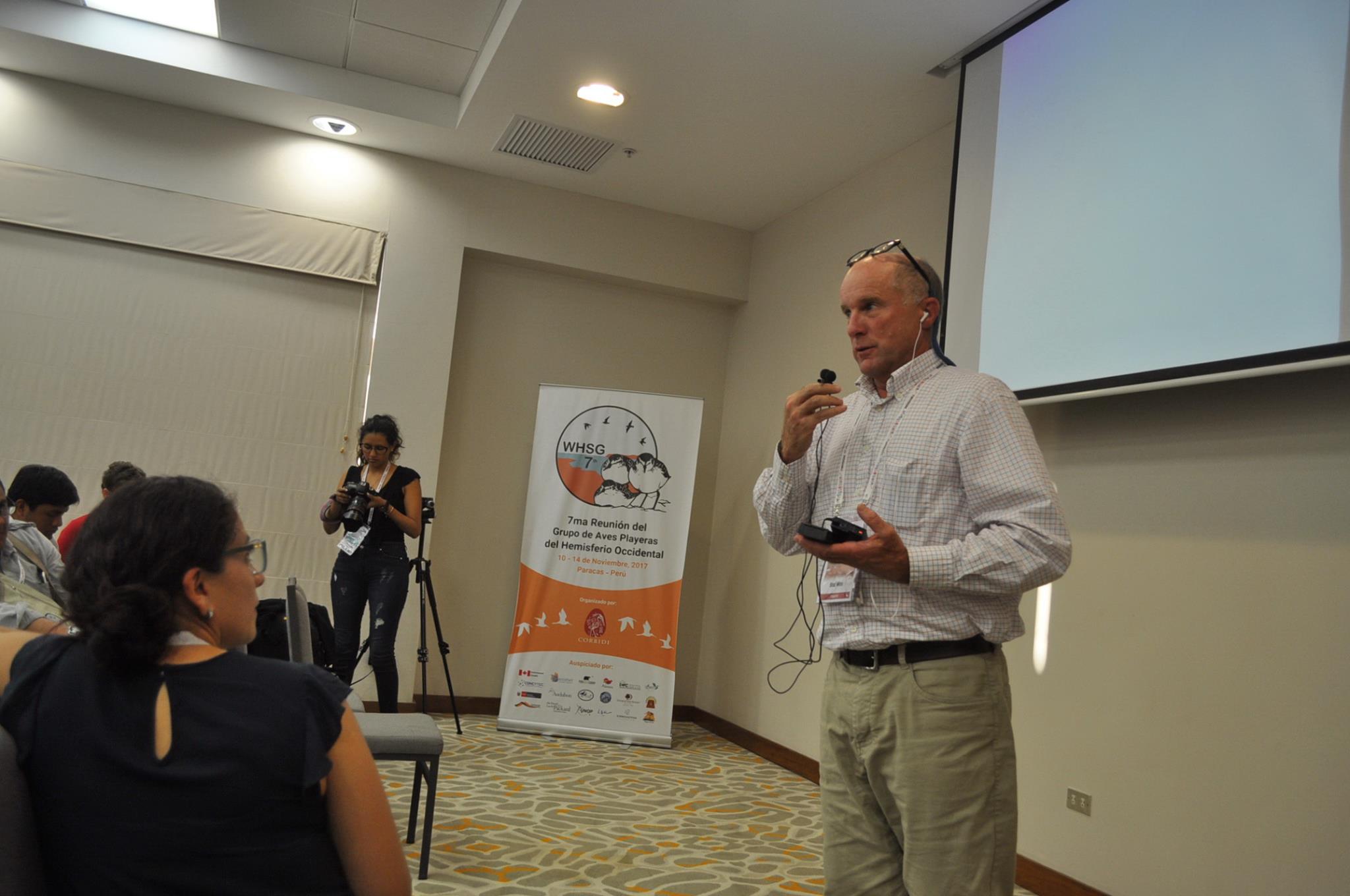
Brad Winn, Manomet’s Director of Shorebird Habitat Management, facilitating a discussion about habitat management for shorebirds. Photo: Diego Luna Quevedo.
Overall, using principles of good governance to improve local capacity and collaborate in the design and implementation of habitat management activities can be difficult and take time, but it will lead to stronger support and yield longer lasting results.
How can WHSRN help?
Collaboration, multi-faceted approach, and patience. These are challenging to achieve but WHSRN and the WHSRN Executive Office are here to help. Most importantly, your site can utilize the network to share ideas, ask for help, and collaborate with partners. The WHSRN Executive Office can offer good governance and community engagement workshops, as well as various tools and mentoring. Manomet’s Habitat Management Division can provide habitat management workshops. For more information, please contact:
-
Diego Luna Quevedo, Good Governance: diego.luna@manomet.org
-
Laura Chamberlin, Community Engagement: lchamberlin@manomet.org
-
Monica, Habitat Management: miglecia@manomet.org
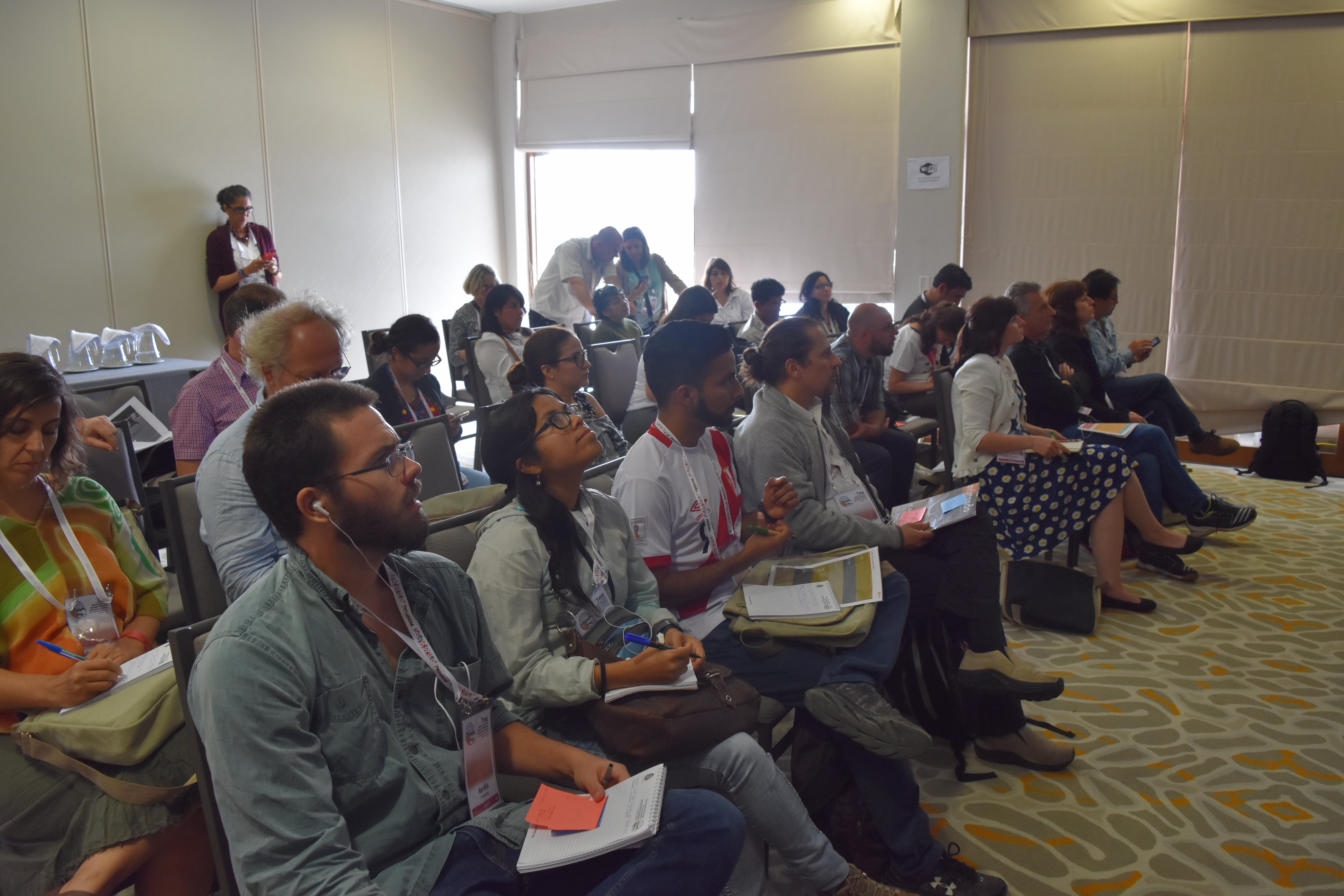
Participants in the WHSRN symposia at WHSG 2017. Photo: Diego Luna Quevedo.






